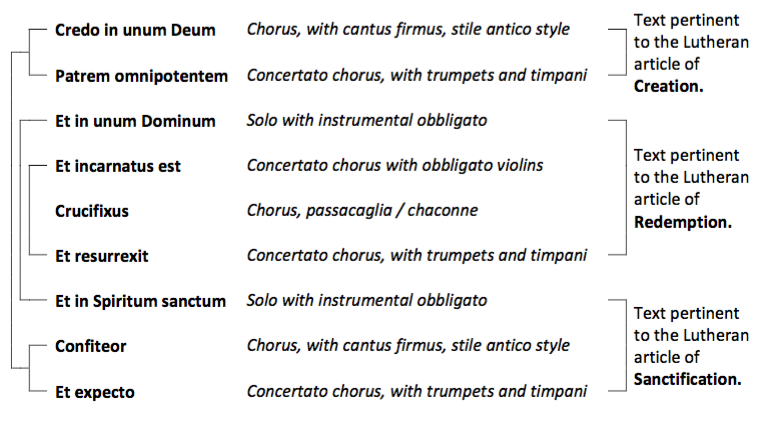Bach’s handwriting in the final section of this work to be completed, the Symbolum Nicenum, is uncharacteristically clumsy and appears hurried. Was this due to his failing eyesight and fluctuating bad health? (Bach was suffering from cataracts and underwent two unsuccessful eye operations in 1748 and 1749, and it has also been suggested that he was suffering from undiagnosed diabetes.) Or alternatively was he feverishly trying to complete his great mass in order to present it to the Dresden authorities for a service of dedication and consecration of the new church which was planned for the spring of 1751? One last roll of the Dresden dice, so to speak. If this was the case, then yet again he was foiled; on July 20th 1750 Bach suffered a debilitating stroke and died 8 days later in Leipzig. Fortunately, the Symbolum Nicenum was finally finished and the so the Mass setting was complete – just.
The Bach scholar Yoshitaka Kobayashi has reliably dated the composition of the Symbolum Nicenum (the Creed) to the period between August 1748 and April 1750. As far as we know this is the first and only setting Bach ever made of these ancient words – central as they are to the Christian faith; his other shorter and much simpler mass settings are devised along the Missa Brevis (short mass) format, where the creed is not set. Number symbolism is present throughout much of Bach’s music, hidden just under the musical surface and concealed within the musical language, and this Credo appears to be no exception. For example, can it be a coincidence that the numerical value of the very word Credo is 43, and that the word Credo is set 43 times exactly across the five vocal parts? (This number is obtained by assuming A=1, B=2 etc. and then applying this formula to the Archaic Latin alphabet.) In the same alphabet, the word Bach comes out as number 14. Musicologists have found countless significant applications of this Bach’s music. At the end of the Patrem omnipotentem manuscript, Bach uncharacteristically notes down the total number of bars composed for this movement: 84. This is very unusual for him, but 14 x 6 = 84. Furthermore, the total number of bars in the first two choral movements combined is 129; or 43 x 3. Could this be a hidden musical homage to the Holy Trinity, coupled with a direct acknowledgement of Christian belief?
The structure of the Symbolum Nicenum is brilliantly devised, and can be interpreted in two ways; both as a palindrome (i.e. something that reads the same both backwards and forwards) and also as a threefold structure. (From the way in which Bach structures his other two major surviving works, the Passions of St John and St Matthew, there can surely be no doubt that this is entirely intentional as precedents exist in these earlier works. There is, for example, a huge central section of the St John Passion which is palindromic.) As well as the palindrome (see diagram below), simultaneously and concurrently the Symbolum Nicenum is divisible into three separate sections (an obvious acknowledgement to the Holy Trinity) each ending in a huge rousing chorus with trumpets and timpani. Furthermore, the texts of these three sections relate specifically to the three articles of religion as proposed by Martin Luther; those of creation, redemption and sanctification.
Sir John Eliot Gardiner argues that the Symbolum Nicenum is the one part of the work to have had the biggest influence on future generations of composers. In the 1850s a copy is recorded as being amongst the possessions of the English Victorian composer and organist, Samuel Sebastian Wesley, although it is not known how on earth he came about it since the work had not been published at this time. The table below shows, on the left, the palindromic structure of the Symbolum Nicenum with the poignant crucifixion event as its pivotal point, and, on the right, the relationship between the text and Luther’s three articles of religion.
